The emergence of the Internet has brought great changes to everyone’s life. If you want to shop in the past, you must go out and buy it at a mall or supermarket. The Internet gives us a brand-new shopping experience. There is no need to go out. Just open your computer or mobile phone and log on to the shopping website to buy and buy. No matter whether it is food, clothing, household appliances, etc., it can be purchased through internet channels. In the 40th issue of today's “Home Appliances Big Dataâ€, we have come to focus on the issues of online TV sales. The data comes from the 2015 China Color Cable Market Summary Report published by AVC.
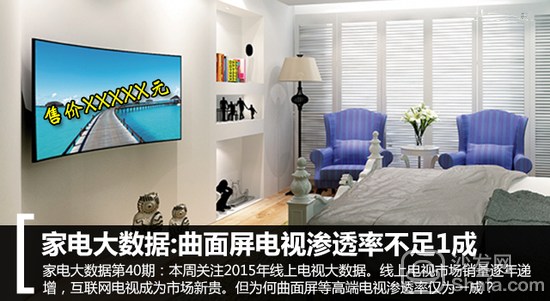
â– The highest proportion of television sales in online home appliance sales
Let's look at a group of 2015 full-year sales of various types of black and white electricity and small household appliances. Big data shows that in all household electrical appliances, TV accounted for 28%, washing machines accounted for 11%, small appliances accounted for 8%, refrigerators accounted for 17%, kitchen and toilet accounted for 10%, and air-conditioning accounted for 26%. From this set of data, it can be seen that in all household electrical appliances, non-television is the product with the highest percentage of shopping.
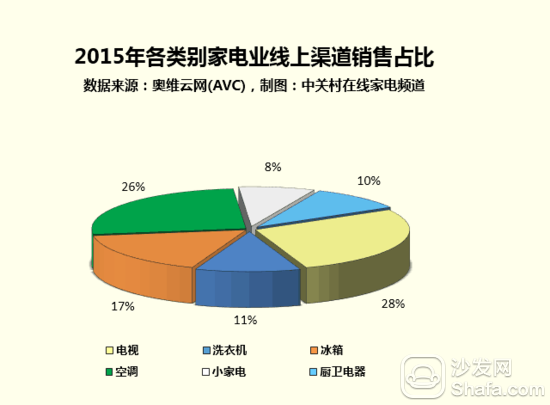
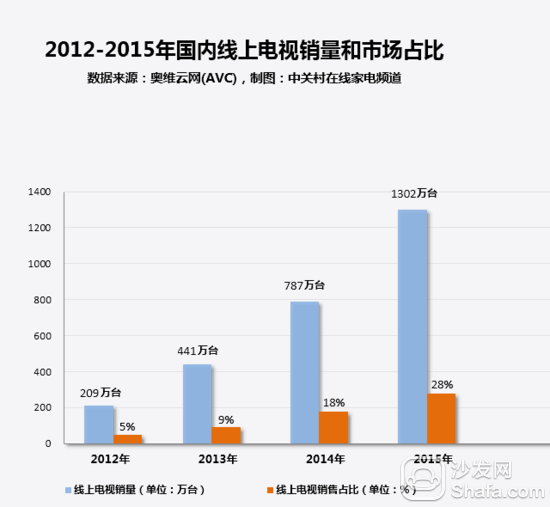
â– Significant increase in the proportion of rural online TV sales
In everybody's impression, the urban market is the most purchasing power. However, in recent years, there has been a dramatic increase in online TV sales in the rural market. According to big data, the prospects for the development of the rural e-commerce market cannot be underestimated. Let's look at a group of data. In 2012, rural e-commerce sales accounted for 1% of sales. In 2013, rural e-commerce accounted for 3%. In 2014, rural e-commerce accounted for 9%. In 2015, rural e-commerce accounted for 20%, and in 2016, rural e-commerce accounted for 25%.


The rural e-commerce market has grown from 3% in 2012 to 25% in 2015, and its market share has reached a quarter. This also means that many rural consumers begin to buy TVs online. Over the past few years, including e-commerce platforms such as Jingdong Mall and Suning Tesco, the scope of delivery has gradually increased to rural areas in third- and fourth-tier cities. The increase in the area covered has also driven online TV sales.
â– Why does the proportion of Internet TV market grow?
Internet TV has been very popular in recent years. One of the important reasons is that Internet TV has more advantages than traditional TV brands. For example, there is no traditional TV that requires physical stores to rent and labor costs, to achieve the factory direct sales, cost-effective are good. In addition, Internet TV is also very rich in content resources. Genuine video platforms, a variety of applications and games also add a lot of selling points to Internet TV.

So, what percentage of Internet TV sales accounted for in the online TV market in 2015? According to big data, Internet brands accounted for 37% of sales, domestic traditional brand TV sales accounted for 52%, Korean brand TV, sales accounted for 4%, and Japanese brand TVs accounted for 7% of sales.
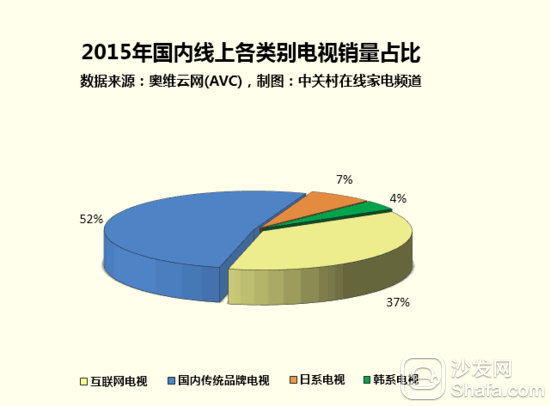
From this set of data, it can be seen that although Internet TV has become the preferred choice for many users, in the online TV market, traditional brand television still occupies half of the country's total, and its share has reached 52%. However, if the share of Internet-brand TVs has increased by 8% compared to the data in 2014, it also means that there is still a large development prospect.
â– 50-inch TVs become overlords in large-screen TVs
At present, the size of televisions in the market ranges from 32-70 inches. When users purchase TVs, they usually consider the size of the living space as a measure of TV size. For example, in a bedroom, a 32-inch or so television is generally selected; in a large living room, a 50-inch or larger screen TV is selected. What size TV is best sold in online market in 2015?

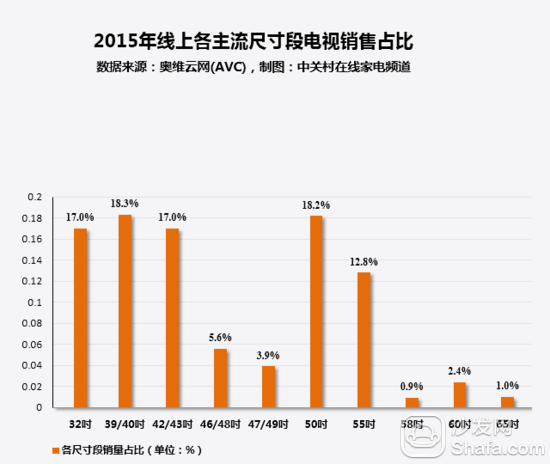
The first place is 39-inch and 40-inch TVs, and the second place is 50-inch TVs. 32-inch and 42- and 43-inch TVs are tied for third place. Thus, in the online market, the most popular size segment of large-screen televisions is mainly concentrated in the 50-inch, which is more suitable for the use of medium-sized living room space, and thus also become the best-selling product in large-screen products.
â– Less than 10% of new television technology still has low penetration rate
There are many new technologies emerging in the television industry. These new technologies have also become a selling point for many products. However, according to big data, these new technologies are good, but the level of consumer recognition is not too high. Let's look at a set of data. In 2015, in the online market, the penetration rate of curved screen TVs was not as high as 0.7%, the TV penetration rate of high-gamut TVs was only 0.8%, and the penetration rate of ultra-thin TVs was 0.1%. However, the quantum dot TV penetration rate is only 0.2%.
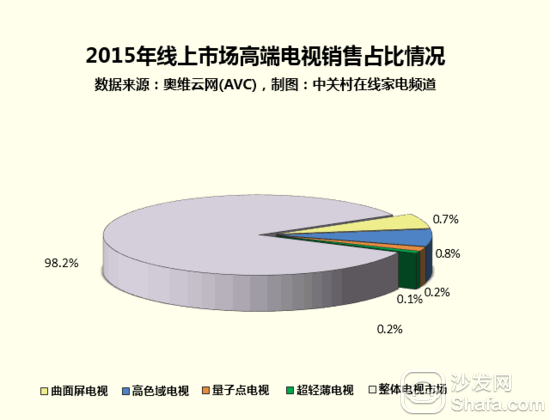
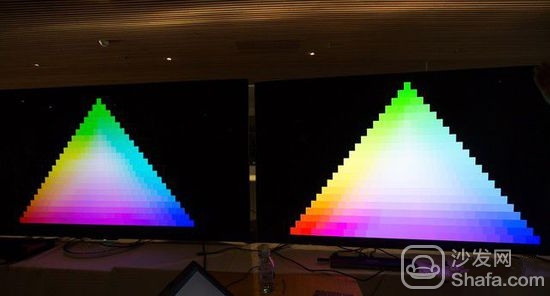
â– The author's point of view: Why is the curved screen TV not favored?
So, what exactly is the reason that these televisions equipped with new technologies have a low penetration rate? The first is the price reason. We use the curved screen TV as an example. The benefits of the curved screen are self-evident, more in line with the viewing habits of the human eye, and ergonomic design, but things always have two sides. Due to the cost of manufacturing, the current cost of curved screen TVs is still high, so in terms of product prices, compared to ordinary TVs of the same size, it is several thousand dollars higher. The price of several thousand dollars often exceeds the purchase budget of many users.
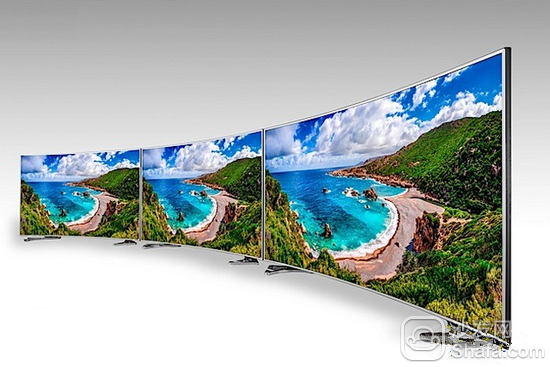
In addition, there is consumer awareness and usage needs. We still take the curved screen TV as an example. The curved screen TV works best when watching movies. However, if the users who purchase do not like to watch video programs such as movies, the curved screen TV is not attractive to consumers. In addition, there are many users who are not very familiar with curved screens. Manufacturers should also give more publicity to new technologies, including curved screens, so that consumers can understand new technologies and purchase on demand. Well, this week's home appliance big data is here, we will see you next week.

â– The highest proportion of television sales in online home appliance sales
Let's look at a group of 2015 full-year sales of various types of black and white electricity and small household appliances. Big data shows that in all household electrical appliances, TV accounted for 28%, washing machines accounted for 11%, small appliances accounted for 8%, refrigerators accounted for 17%, kitchen and toilet accounted for 10%, and air-conditioning accounted for 26%. From this set of data, it can be seen that in all household electrical appliances, non-television is the product with the highest percentage of shopping.

TV has become a key product in online sales
In recent years, with the continuous rise of e-commerce websites, more and more consumers have chosen to purchase TVs online. This point, the number of online TV sales in recent years can be answered. According to big data, in 2012, the number of domestic online television sales was 2.09 million units, and sales accounted for 5%. In 2013, the number of domestic online TV sales climbed to 4.41 million units, accounting for 9%. By 2014, domestic online TV sales increased to 7.87 million units, accounting for 18%. In the past 2015, domestic online TV sales reached 13.02 million units, accounting for 28% of the total. 
Since 2012, online TV sales have grown steadily
On the whole, comparing the 2015 data with the 2012 data, 13.02 million units and 2.09 million units are in stark contrast. In terms of market share, it has climbed from 5% to 28%. Compared with the offline market, it already has almost 30% market share. If you look at the current development situation, a few years later, online TV sales are expected to catch up and even exceed the sales volume of offline physical store channels. â– Significant increase in the proportion of rural online TV sales
In everybody's impression, the urban market is the most purchasing power. However, in recent years, there has been a dramatic increase in online TV sales in the rural market. According to big data, the prospects for the development of the rural e-commerce market cannot be underestimated. Let's look at a group of data. In 2012, rural e-commerce sales accounted for 1% of sales. In 2013, rural e-commerce accounted for 3%. In 2014, rural e-commerce accounted for 9%. In 2015, rural e-commerce accounted for 20%, and in 2016, rural e-commerce accounted for 25%.


The penetration rate of rural e-commerce TV sales market has increased significantly
The rural e-commerce market has grown from 3% in 2012 to 25% in 2015, and its market share has reached a quarter. This also means that many rural consumers begin to buy TVs online. Over the past few years, including e-commerce platforms such as Jingdong Mall and Suning Tesco, the scope of delivery has gradually increased to rural areas in third- and fourth-tier cities. The increase in the area covered has also driven online TV sales.
â– Why does the proportion of Internet TV market grow?
Internet TV has been very popular in recent years. One of the important reasons is that Internet TV has more advantages than traditional TV brands. For example, there is no traditional TV that requires physical stores to rent and labor costs, to achieve the factory direct sales, cost-effective are good. In addition, Internet TV is also very rich in content resources. Genuine video platforms, a variety of applications and games also add a lot of selling points to Internet TV.

Internet TV video resources are very rich
So, what percentage of Internet TV sales accounted for in the online TV market in 2015? According to big data, Internet brands accounted for 37% of sales, domestic traditional brand TV sales accounted for 52%, Korean brand TV, sales accounted for 4%, and Japanese brand TVs accounted for 7% of sales.

Beyond the trend of domestic traditional brand television
From this set of data, it can be seen that although Internet TV has become the preferred choice for many users, in the online TV market, traditional brand television still occupies half of the country's total, and its share has reached 52%. However, if the share of Internet-brand TVs has increased by 8% compared to the data in 2014, it also means that there is still a large development prospect.
â– 50-inch TVs become overlords in large-screen TVs
At present, the size of televisions in the market ranges from 32-70 inches. When users purchase TVs, they usually consider the size of the living space as a measure of TV size. For example, in a bedroom, a 32-inch or so television is generally selected; in a large living room, a 50-inch or larger screen TV is selected. What size TV is best sold in online market in 2015?

More and more users choose large-screen TVs
According to Big Data, 32% of TV sales accounted for 17%, 39 and 40 inch TVs accounted for 18.3%, 42 and 43 inches accounted for 17%, 46 and 48 inches accounted for 5.6%, 47 and 49 inches. The percentage was 3.9%, the 50 inches accounted for 18.2%, the 55 inches accounted for 12.8%, the 58 inches accounted for 0.9%, the 60 inches accounted for 2.4%, and the 65 inches accounted for 1.0%. 
Large-screen TV, 50-inch TV Stands Out
The first place is 39-inch and 40-inch TVs, and the second place is 50-inch TVs. 32-inch and 42- and 43-inch TVs are tied for third place. Thus, in the online market, the most popular size segment of large-screen televisions is mainly concentrated in the 50-inch, which is more suitable for the use of medium-sized living room space, and thus also become the best-selling product in large-screen products.
â– Less than 10% of new television technology still has low penetration rate
There are many new technologies emerging in the television industry. These new technologies have also become a selling point for many products. However, according to big data, these new technologies are good, but the level of consumer recognition is not too high. Let's look at a set of data. In 2015, in the online market, the penetration rate of curved screen TVs was not as high as 0.7%, the TV penetration rate of high-gamut TVs was only 0.8%, and the penetration rate of ultra-thin TVs was 0.1%. However, the quantum dot TV penetration rate is only 0.2%.

High-end technology TV penetration rate is not high

High-gamut television penetration is only 0.8%
â– The author's point of view: Why is the curved screen TV not favored?
So, what exactly is the reason that these televisions equipped with new technologies have a low penetration rate? The first is the price reason. We use the curved screen TV as an example. The benefits of the curved screen are self-evident, more in line with the viewing habits of the human eye, and ergonomic design, but things always have two sides. Due to the cost of manufacturing, the current cost of curved screen TVs is still high, so in terms of product prices, compared to ordinary TVs of the same size, it is several thousand dollars higher. The price of several thousand dollars often exceeds the purchase budget of many users.

Curved screen TV penetration rate is still not high, the popularity still takes time
In addition, there is consumer awareness and usage needs. We still take the curved screen TV as an example. The curved screen TV works best when watching movies. However, if the users who purchase do not like to watch video programs such as movies, the curved screen TV is not attractive to consumers. In addition, there are many users who are not very familiar with curved screens. Manufacturers should also give more publicity to new technologies, including curved screens, so that consumers can understand new technologies and purchase on demand. Well, this week's home appliance big data is here, we will see you next week.